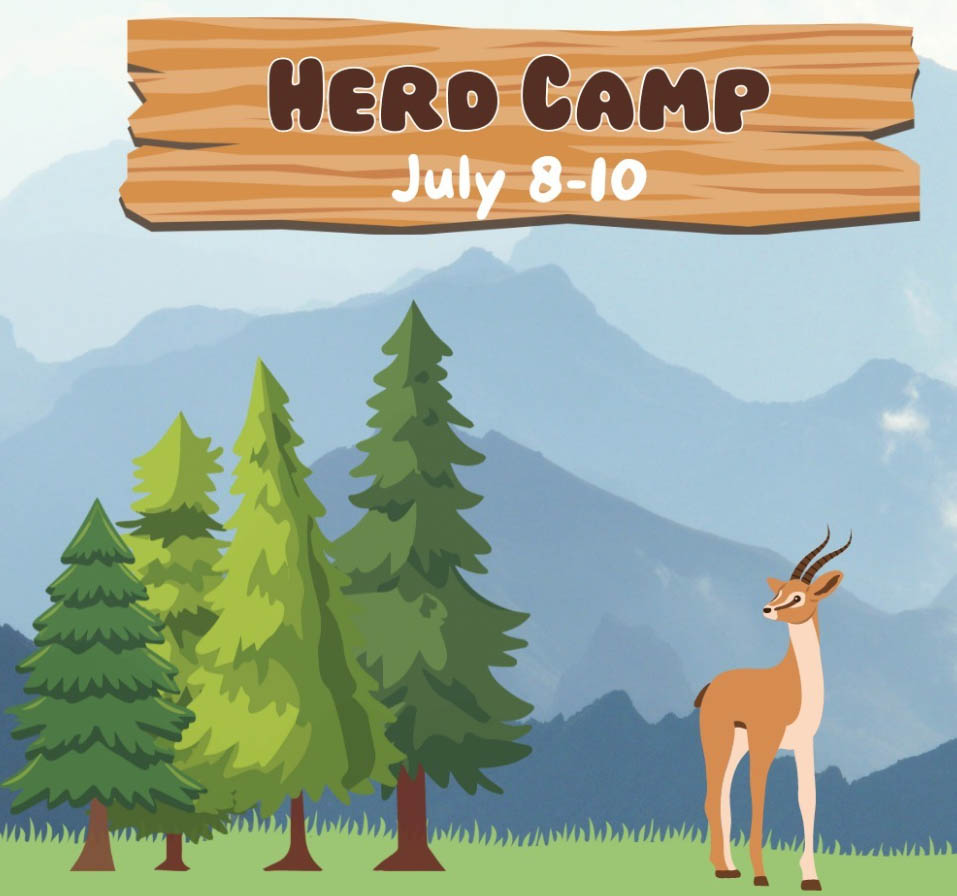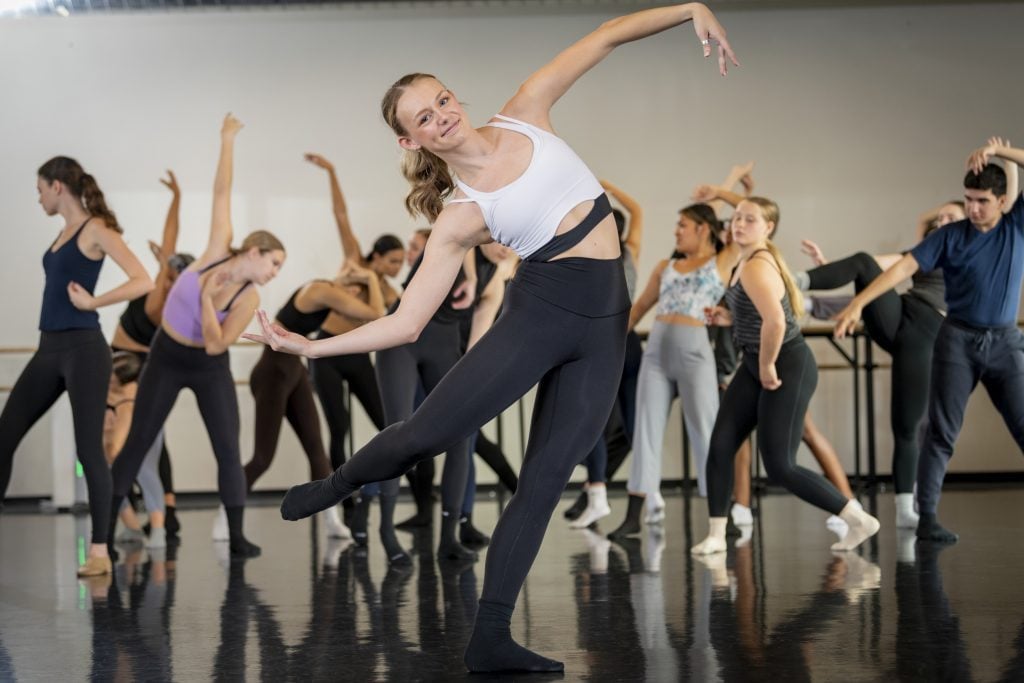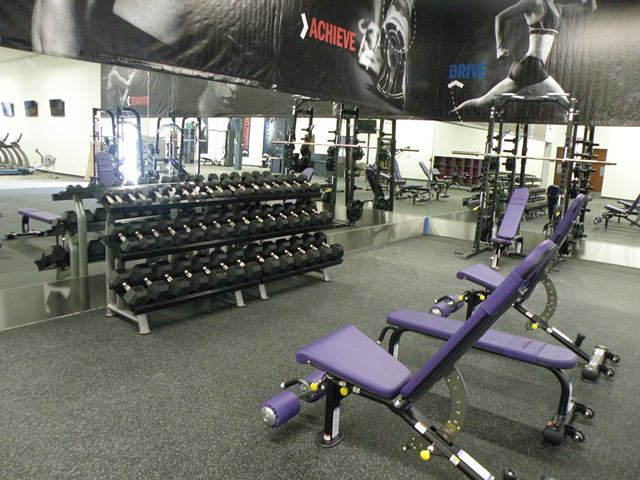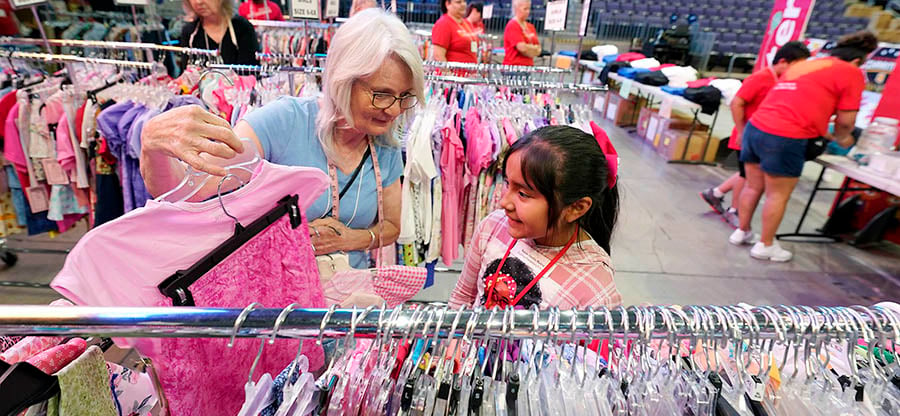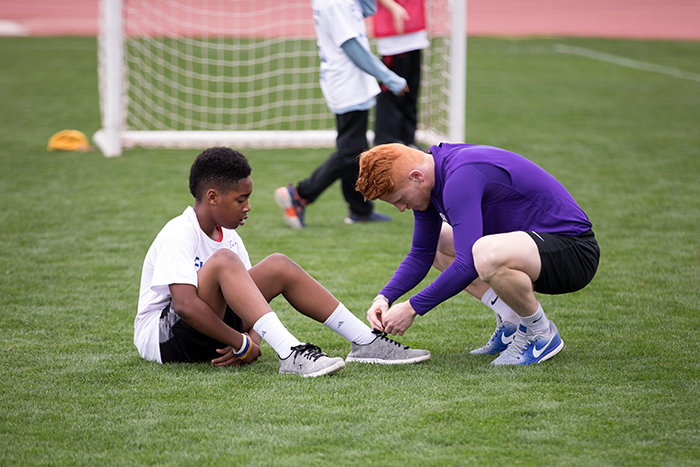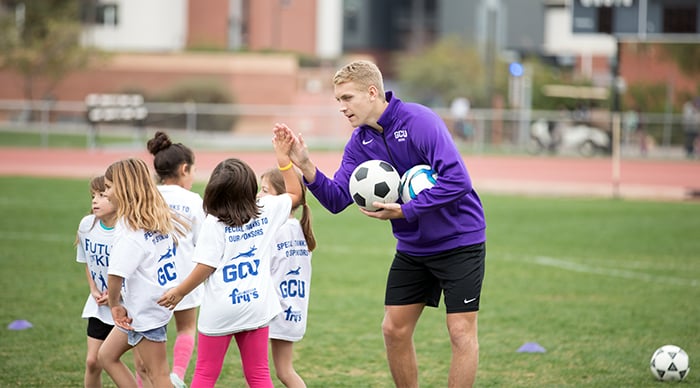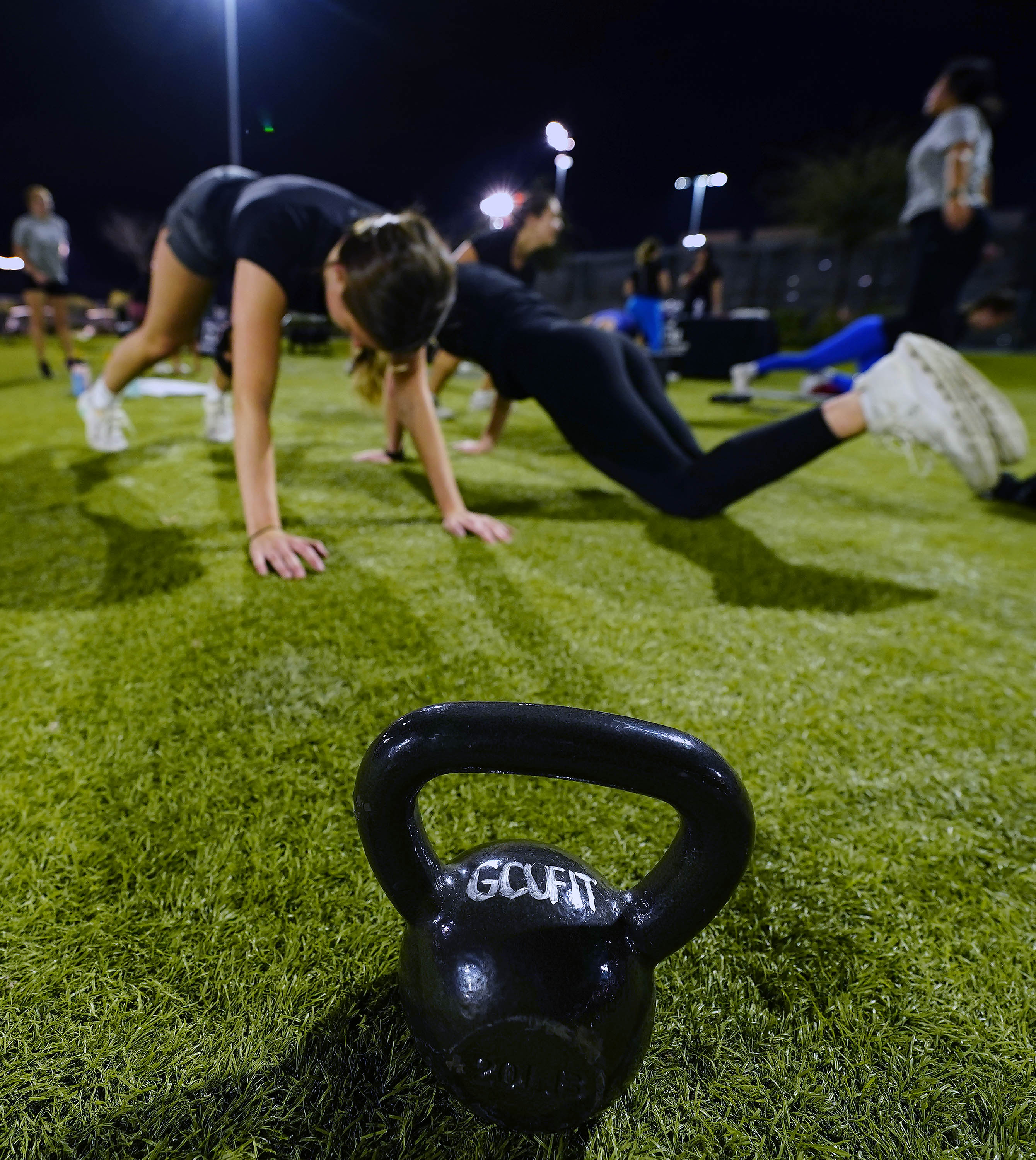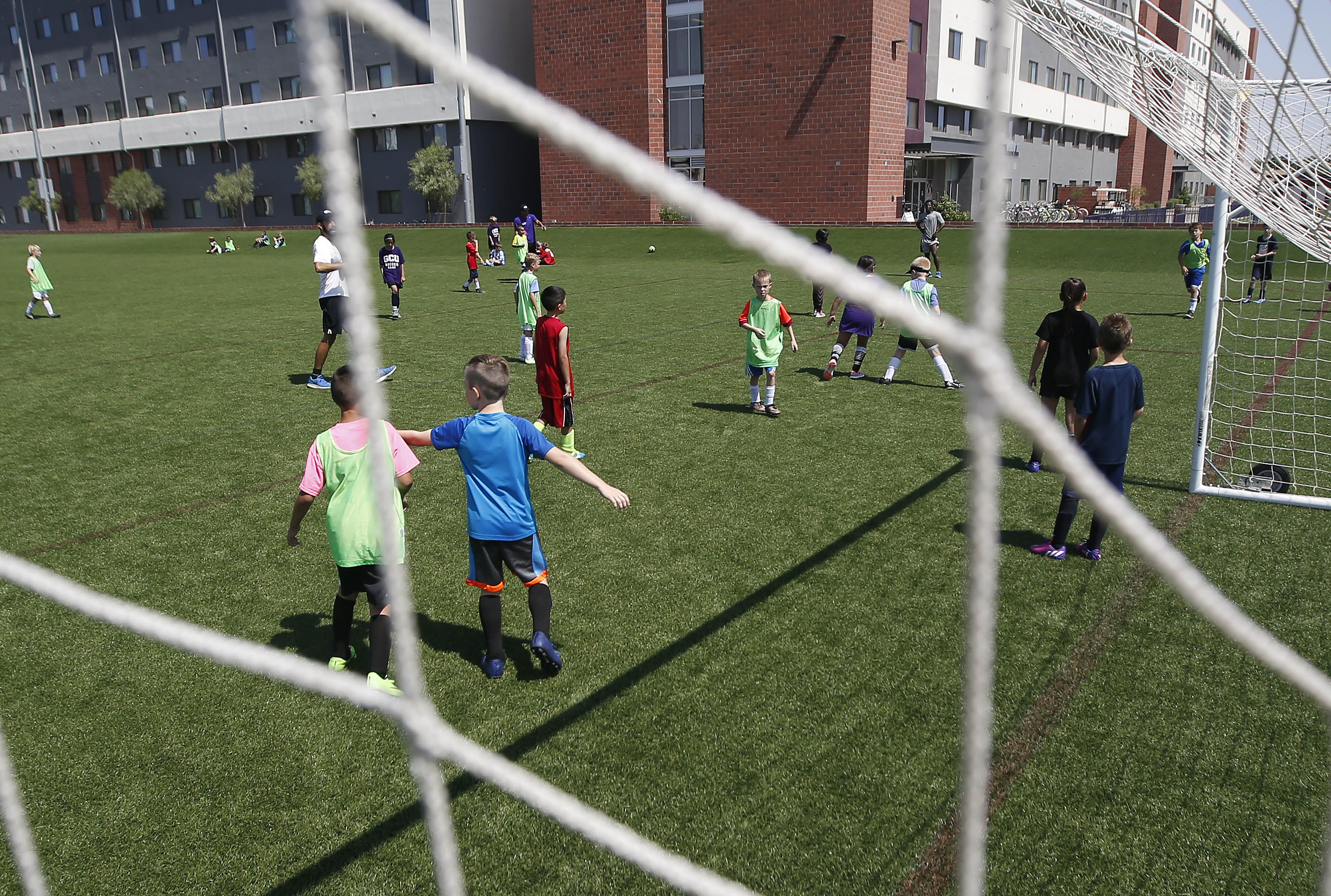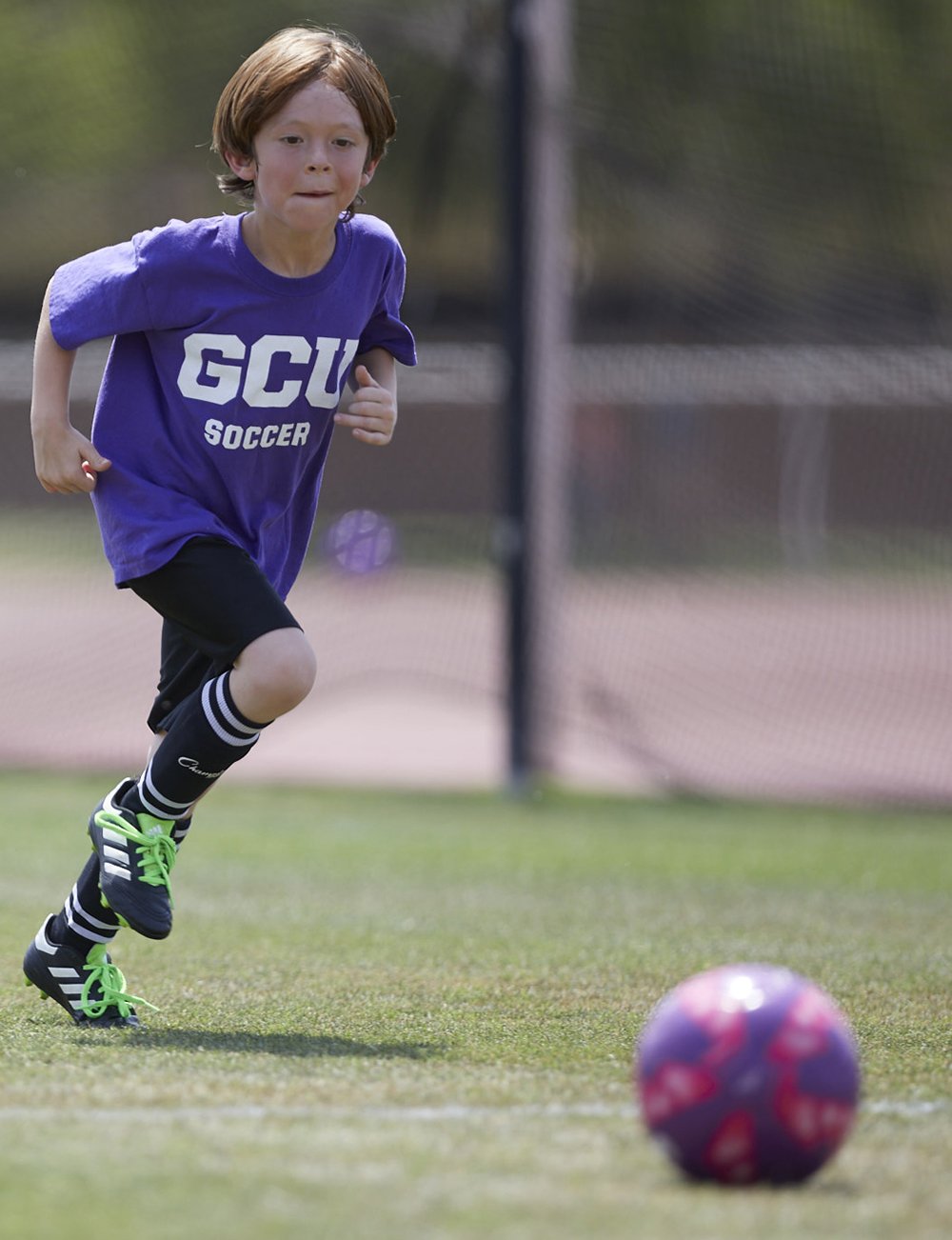
Editor’s note: This story is reprinted from the November issue of GCU Magazine. To view the digital version, click here.
By Lana Sweeten-Shults
GCU Magazine
Dr. Heather Monthie was dashing to a meeting.
The Associate Dean of Technology in Grand Canyon University’s College of Science, Engineering and Technology zipped past GCU’s main entrance, where a group of 19- and 20-year-old female students watched a firetruck pulling up.
It was what one of those students asked her friends that almost stopped Monthie in her tracks: “Can girls be firefighters?”
“It floored me,” Monthie said. “I kick myself every day for not stopping and just being late to that meeting and saying to those girls, ‘YES! ABSOLUTELY, 100%. I will show you some.’
“I kind of take that as a lesson. You’ve got to find these little pockets in time where you can help show others that, yes, women can do these things.”
Monthie has been showing young women at GCU they also can be computer scientists, programmers or cybersecurity professionals. And she’s not the only one.

The University touts an impressive number of women leaders on the CSET faculty -- and not just Monthie, but Dr. Janet Brelin-Fornari, the new Associate Dean of Engineering, along with professors such as Deborah Haralson, Information Technology Faculty Lead, or Samantha Russell, Electrical Engineering Lead.
“We’re doing a good job here. … We’re doing something different here,” Monthie said of the number of women CSET faculty who are helming STEM (science, technology, engineering and math) disciplines still under-represented by women.
While women made up 57.2% of all professional workers in 2015, they comprised only 46.6% of science professionals, 24.7% of computer and math professionals, and 15.1% of engineering and architecture professionals, according to a report by the Women in Science, Technology, Engineering, Math, Manufacturing and Design Initiative. Corinne Araza, Grand Canyon Education’s Director of K-12 STEM Outreach and Program Development, said it’s vital to connect girls to STEM early, particularly by middle school, when girls who might show a propensity for math and science start to turn away from those disciplines and begin to be more interested in other careers, such as nursing, where they can help others in more direct ways.
“If we don’t start at the K-12 level, then we have less of an opportunity of getting girls at that college level,” she said.
The National Science Foundation’s Science & Engineering Indicators (2018) relayed that women in 2015 received fewer bachelor’s degrees than men in the computer sciences (18%), engineering (20%), physical sciences (39%) and mathematics (43%).
Those dismal numbers never swayed Brelin-Fornari, who followed in her engineering father’s footsteps. After leaving General Motors and Kettering University, where she was a mechanical engineering professor and Crash Safety Center Director, she went on to work with the National Highway Traffic Safety Administration to develop a side impact standard for child seats.
“My dad actually told me, ‘You can try being an engineer,’” Brelin-Fornari said of her father, a power plant superintendent for Detroit Edison.
“If you see women in these positions, you’re more likely to believe you can be a woman in that position.”
“I remember people in high school just saying, ‘Girls CAN’T be engineers.’ I had professors who said girls shouldn’t be in these classes. I would always say, ‘Well, my dad always said I could. … Don’t tell me that I can’t be an engineer,’ ” Brelin-Fornari said.

It’s the same kind of negative response senior engineering major Makayla Jewell shared: “A softball coach asked me after a tournament what I wanted to do with my life. I wanted to play with the Florida Gators softball team – and I wanted to be an engineer. He said to me, ‘You will NEVER be able to do either one of those,’” said Jewell, the STEM student worker for K12 Educational Development and president of the University’s Robotics Club.
All that white noise is what many of CSET’s professors just didn’t accept.
Associate IT Professor Glenda Dilts knew she had an aptitude for computers at age 10, when she went to a computer class with her mother and understood the flow chart on the chalkboard better than the adults in the room.
Dilts later soaked up her computer knowledge while on the job, going from word processing to data processing and then learning the BASIC, COBOL and Java computer programming languages. She received a grandfathered teaching certificate in computer science and then pursued a master’s degree.
There was a time when she was the only woman in her department.
“It would never occur to me,” she said resolutely, that she couldn’t work on computers. “If the door’s open, I’m stepping through it.”
Haralson, too, developed her IT skills on the job. She coded her first game in sixth grade. That passion for computers didn’t wane when she studied engineering or when she started a family and a job as a secretary at Honeywell, where her dad worked as an engineer and her husband worked, too.
Trading engineering for computers, she sought out mentors and continued to develop her expertise as she moved into IT/tech support and teaching at community colleges before earning her master’s degree.

“I didn’t realize being a female was a problem until co-workers would ask my boss why I was in meetings that weren’t necessary for my job,” said Haralson, the author of several tech books.
Monthie, too, didn’t pay attention when a boyfriend said girls couldn’t be pilots (she did become one). After working in aviation, she became accustomed to working in male-dominated environments.
“It just doesn’t bother me,” she said.
Like Brelin-Fornari, Electrical Engineering Program Lead Samantha Russell followed her father into engineering, though he didn’t have a degree and learned what he knew on the job.
She was one of only four women out of 200 students in one of her college engineering classes.
“We tried to plan our schedules together,” she said. “We leaned on one another.”
That’s what CSET’s female faculty members want to be to students – someone to lean on.
“If you see women in these positions, you’re more likely to believe you can be a woman in that position,” Araza said.
It’s why senior IT major Crystal Wake, the first female president of GCU’s IT Club, pushes forward. “A lot of it comes from seeing women represented in IT, which GCU has done a fantastic job,” she said. “I attribute a lot of my success to professors like Deborah Haralson and Dean Monthie.”
Wake wished she had been introduced to tech fields at an earlier age.
“I didn’t have the materials, really,” said Wake, whose club, IxT, recently was approved to run a Girls Who Code chapter. “My biggest thing is giving girls the infrastructure – give them the starting edge where they can decide for themselves, ‘Yes, I want to go into IT,’ or ‘No, I don’t.’ ”
Haralson said it’s important to feed children’s science curiosity at an early age instead of deflecting to stereotypes. “We’d get more innovation, creativity and success,” she said.
Araza and Marni Landry, GCE Manager of K-12 STEM Outreach, are purposeful in choosing students to represent GCU at K-12 outreach events.
“I actively recruit girls in CSET to help myself and Marni in outreach,” Araza said, so when it came time to picking Jewell as the department’s first STEM student worker, “make no mistake, I was very strategic in the voice I was looking for.”
Such students are at the forefront of events such as the GCU Robotics Club’s Girl Powered STEM workshops, done in partnership with K12 Educational Development, to show young girls they can be robotics engineers, computer programmers and more.
Monthie said a lot of care is taken into making sure GCU has a 50-50 representation of male and female students at K-12 outreach events. GCU also tries to make sure there’s no barrier to entry – whether a student has a lot of experience in STEM or none at all, they’re made to feel they can be included.
“When we have things on campus, I try to pop in and say hello – and the other faculty do, too – so that young girls and young men can see both genders can do this,” Monthie said.
Moreover, women bring a different voice to the table that’s so important in creating products with a wider societal reach or in approaching a problem from a different perspective.
“Women have different life experiences,” Brelin-Fornari said. “Our creativity, our vision, our desire to help make things better are built on those different experiences.”
It’s high on her priority list, she said, to increase the number of women in GCU’s engineering programs and to develop that next generation of women in STEM.
“Believe in yourself,” she tells them. “Set your goals and go for them. Really, some of the other things are just noise. You can do this — you can do this.”
****
Related content:
GCU Today: Girl Powered event helps STEM gap in science fields

